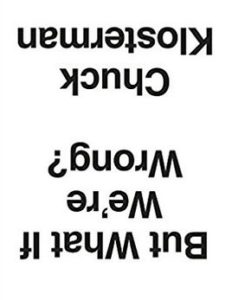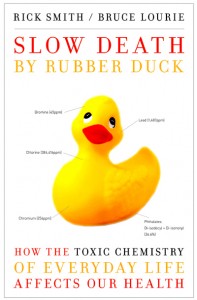But What If We’re Wrong? Thinking About the Present As If It Were the Past by Chuck Klosterman looks at present issues as if they were being viewed in the past. Explaining how we live now as if now was then is a fun and somewhat ridiculous exercise. He writes about gravity, time, rock music, television, and more. If you’re familiar with Klosterman’s work, it fits with his interesting writing. One area he doesn’t touch on is the environment. In fact, he states he’s not going to touch on the environment. I can think of many reasons he chose not to address the environment. For one, he may not have wanted the issue to become politicized. Unfortunately, this happens too often with environmental discussions. That’s what I’m here to do. I’ll play this game and make environmental predictions about the issues of today as if they were in the past. Continue reading
Tag Archives: Book Review
“Tribes” Applied to Environmental Professionals
 Tribes, by Seth Godin, describes how significant change can be implemented by groups of people connected to each other by an idea, goal, or conviction. A tribe. The tribe doesn’t have to be co-located. It only needs something to believe in, a leader, and a place to connect. While reading, I was struck at how much Tribes applies to environmental professionals and this blog. Continue reading
Tribes, by Seth Godin, describes how significant change can be implemented by groups of people connected to each other by an idea, goal, or conviction. A tribe. The tribe doesn’t have to be co-located. It only needs something to believe in, a leader, and a place to connect. While reading, I was struck at how much Tribes applies to environmental professionals and this blog. Continue reading
Slow Death By Rubber Duck – Book Review
Slow Death By Rubber Duck, The Secret Danger of Everyday Things is one of the ultimate environmental lifestyle experiments. Its message has stayed with and influenced me on a daily basis since I read it a few years ago. This review is a few years overdue, but there is no better place for it than a site dedicated to the environmental professional lifestyle.
The premise of the book is two environmental scientists and the authors, Rick Smith and Bruce Lourie, put themselves through a Super Size Me like exposure to several everyday chemicals that you probably don’t know you’re exposed to and measure the levels in their body.
They found that even brief exposure to these chemicals showed drastic increases in their bodies. The positive finding was that when you remove your exposure, the levels go down. As with all toxicology, people’s bodies will react differently to different dosages and exposures. It’s a perfect human experiment to illustrate that dose x exposure = risk. Although the dosage is low, the exposure is high.
As an environmental professional, my friends don’t know exactly what I do. (There’s not a tv show about environmental professionals.) Introducing them to this book and its message has been a great way for me to help them understand. It has also helped me make a connection to my students. I teach environmental, health and safety courses to non-environmental adults. Many of who have never even heard of BPA. So using this book and its pop culture and individual product connection has helped open some eyes and convey the message.
I would highly recommend this book to anyone who wants to know more about how your couch, cookware, shampoo, food, and water can be slowly poisoning you.
One of my favorite anecdotes from the book is the following. Should I buy the regular ketchup in the glass bottle or the organic ketchup in the plastic bottle?
You can buy the book on Amazon, here.


